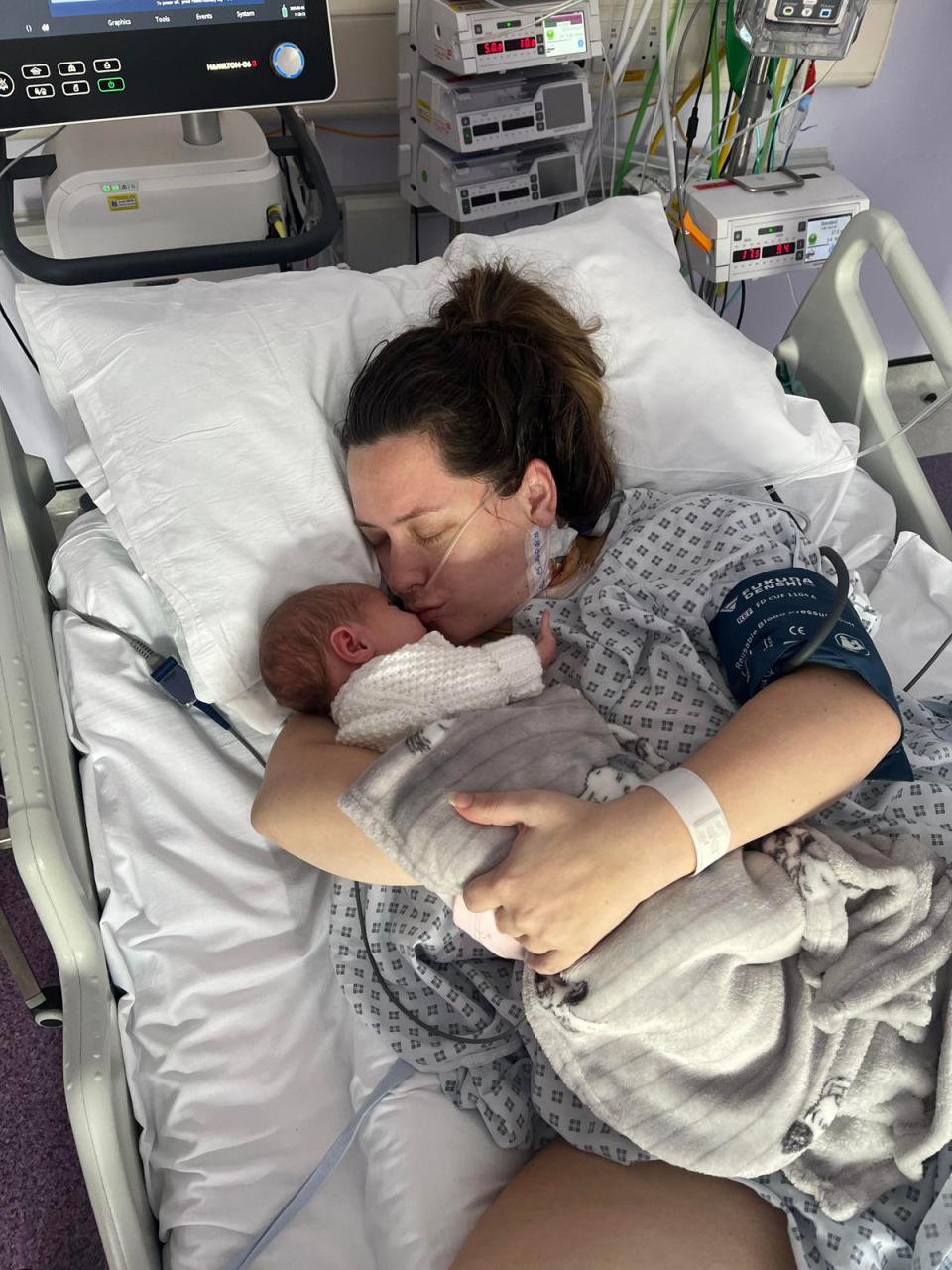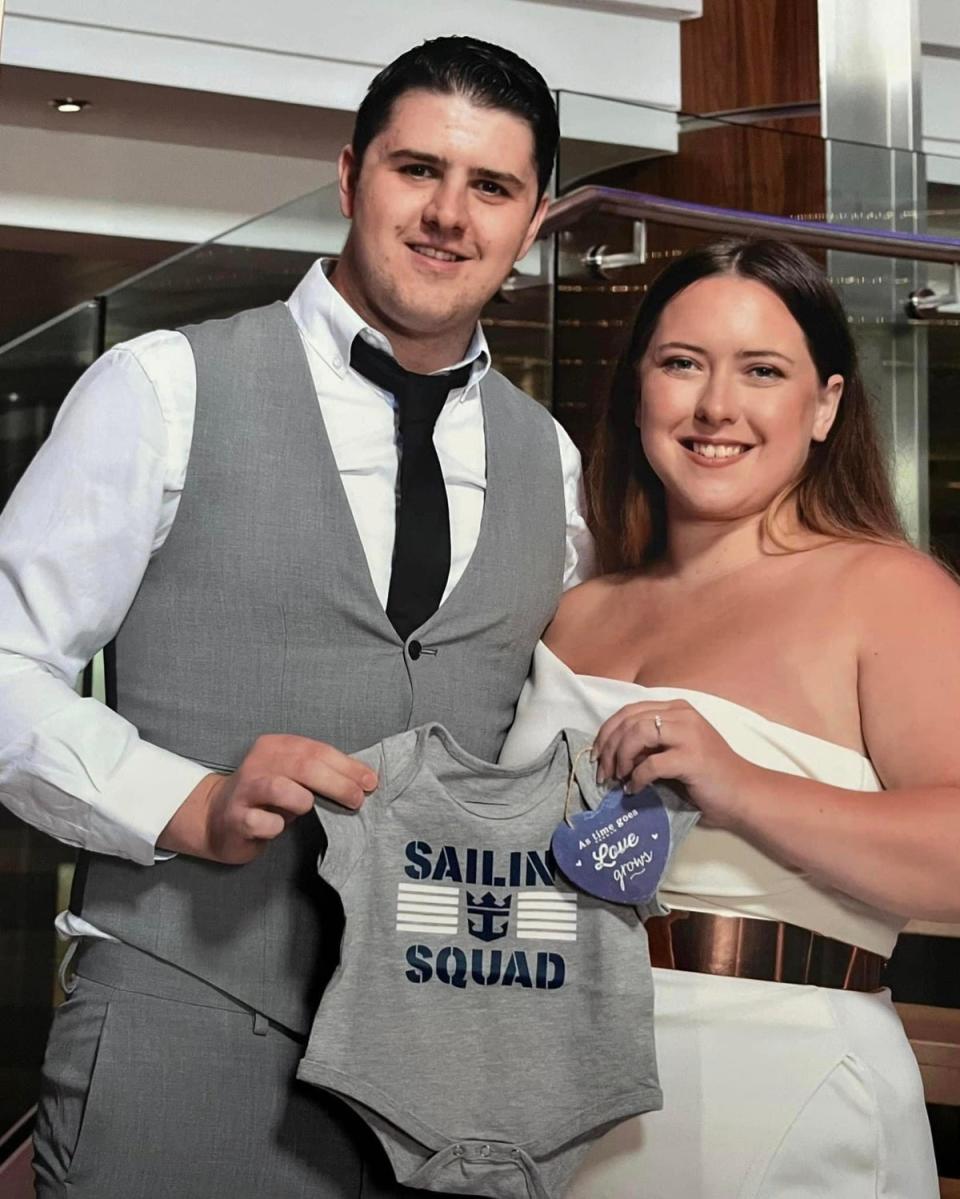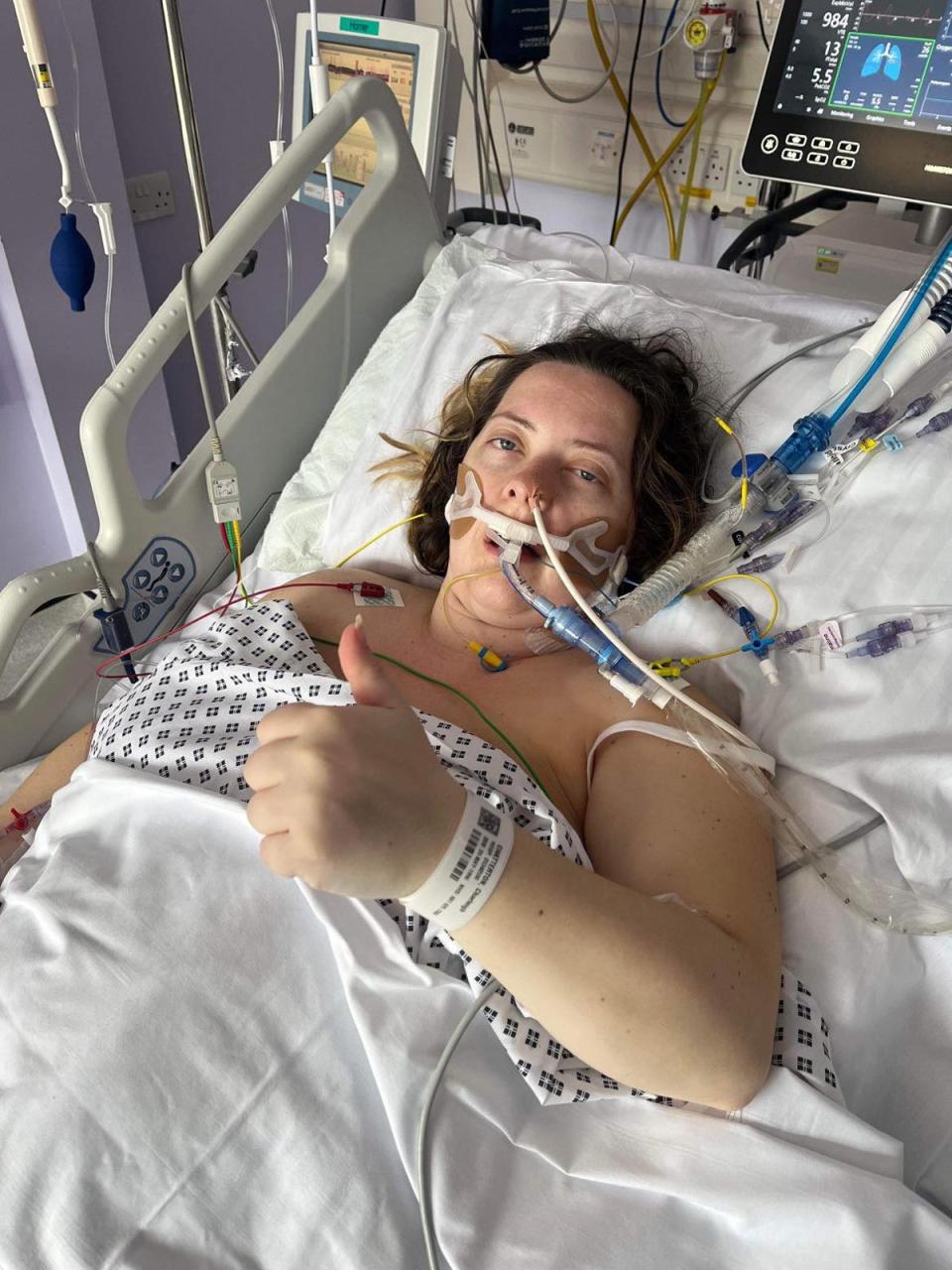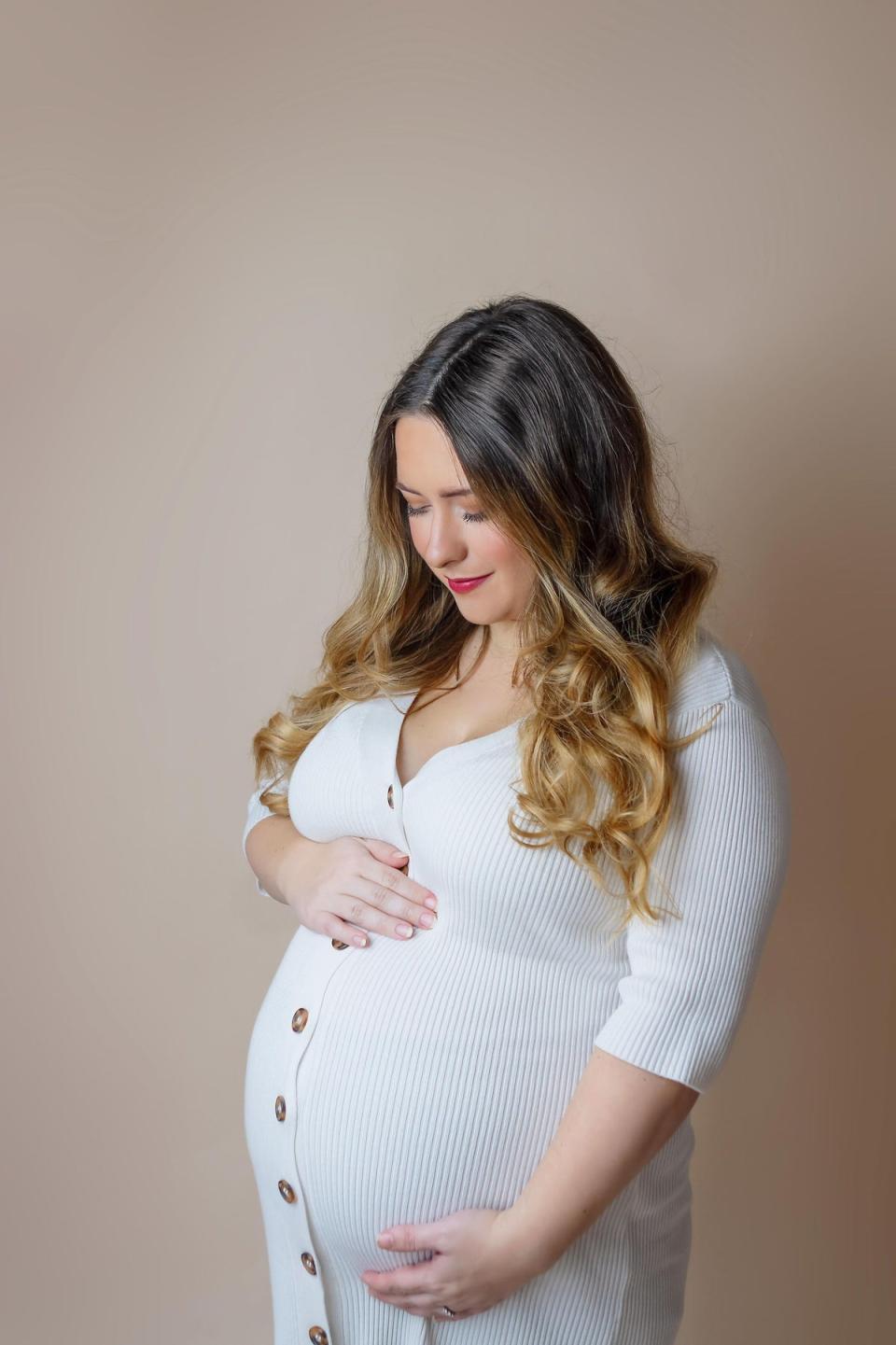Mother’s warning after deadly flesh-eating disease almost kills her a week after birth

A mother has warned others about a deadly flesh-eating disease that nearly killed her within a week after giving birth.
Six days after 27-year-old Charleigh Chatterton gave birth to her daughter, Alessia, without any complications, she developed flu-like symptoms and a small rash on her stomach.
She said it was when she woke up in the night to breastfeed her daughter and the rash had not only tripled in size but was “so incredibly hot” that her fiancee Liam Boyne, 27, suggested they go to the hospital.

After a number of tests, a scan revealed pockets of gas underneath her tissue. Doctors told the finance administrator she had necrotising fasciitis - also known as the ‘flesh-eating disease’ - and would need immediate surgery to remove dead tissue in an effort to prevent the flesh-eating bacteria from spreading.
The mother-of-one said: “Pretty soon after the scan, doctors came in with a consent form asking me to sign off on them doing what they needed to do in the surgery and that I could die. They said, ‘Either don’t sign it and you’ll die, or sign it and you might die.’
“I was completely numb and severely unwell - nothing really made sense.
“My partner was completely beside himself. The doctors spoke to him and my mum, telling them, ‘This is the prognosis, the possibility of her dying.’”
The NHS describes the disease as a “rare and life-threatening” infection, which affects tissue underneath the skin. It can happen if a wound gets infected, with treatment in a hospital needed straight away as the infection can progress very quickly and lead to serious issues. Symptoms include the flu-like ones and rash that Ms Chatterton experienced, as well as vomiting and swelling of affected areas, followed by dizziness and confusion when it spreads through the body.

Ms Chatteron was kept sedated for three days after the surgery, and when she woke up, she said she was repeatedly told, “I was very lucky, they caught it early, and things would’ve been a lot worse.”
She had two wounds on her stomach, which were left open for almost a week to enable her body to recover before she was fitted with a vacuum pump, which was latterly removed.
After two weeks in hospital, she was able to go home in mid-May, although she was still largely bedbound as she found walking around when she had the vacuum pump very painful.
While she is now “getting there” in her recovery, she said, “There are still certain positions I can’t pick my daughter up in. I’ll breastfeed her for a bit and then my fiancee will take her for the rest of the feed as it’s too painful.”
She spoke about her inability to enjoy being a new mother to her firstborn child as perhaps the hardest part of her whole experience.
“My fiancee has had to take on the role of both mum and dad,” she said.

“It was awful, so hard. You plan for it all - the first two weeks at home spent bonding with your child and I didn’t get that, I had to watch from the sidelines.”
Ms Chatterton has also found the lack of answers difficult. “Knowing how I got the disease is still unanswered,” she said. “So many questions that are unanswered - it does make you really uncomfortable.”
She desperately wants to spread awareness about necrotising fasciitis and warned, “My advice to everyone is that if you do get flu-like symptoms and a rash, then mark the rash with a pen and leave it for maximum a couple of hours. If it grows outside that pen line, get it checked out.
“It is better to get this everything’s fine diagnosis than leave it and potentially die.”
In February, footballer Luke Abrahams, 20, from East Hunsbury, did die in hospital after contracting the “flesh-eating” virus.
Ms Chatterton said she is still coming to terms with the fact that this could have been her fate only a month ago. “I still have bouts of confusion,” she said, adding: “But the experience has opened my eyes up to appreciating life.”

 Yahoo Sport
Yahoo Sport 





































